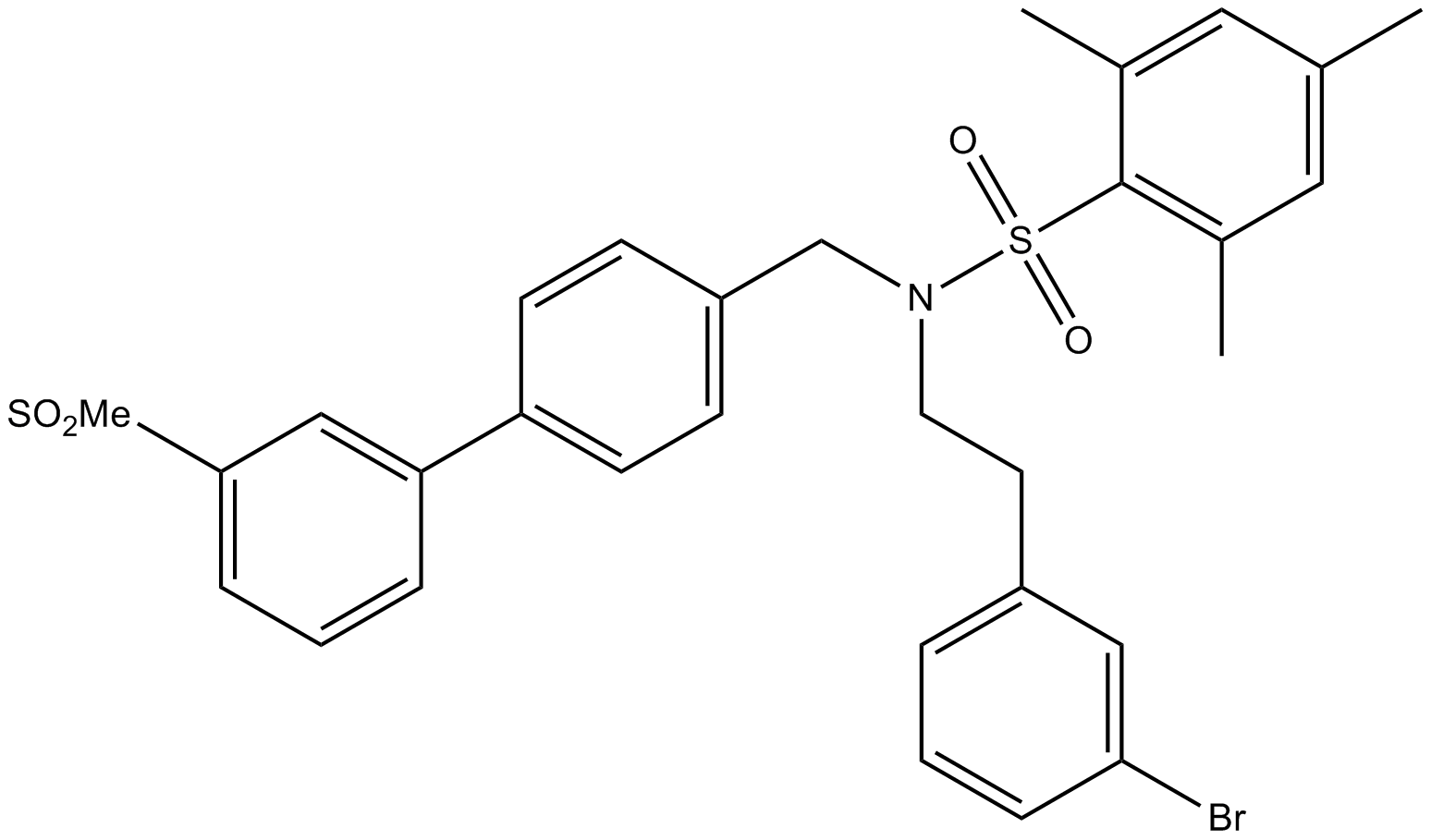SR-9243 |
| Catalog No.GC13680 |
inverse agonist of LXR
Products are for research use only. Not for human use. We do not sell to patients.

Cas No.: 1613028-81-1
Sample solution is provided at 25 µL, 10mM.
SR9243 is a liver-X-receptor (LXR) inverse agonist that induces LXR-corepressor interaction. It potently reduces cancer cell viability (IC50=15–104 nM) in MTT reduction assays in prostate (PC3 and DU-145), colorectal (SW620 and HT29), and lung (HOP-62 and NCI-H23) cancer cell lines. [1]
LXR (liver X receptor) is a member of the nuclear receptor family of transcription factors. It is an important regulator of glycolysis and lipogenesis enzyme expression.
In SW620 cells, 1 mM SR9243 treatment for 12 hours induces cell death with a robust increase in caspase 3/7 activation. In addition, SR9243 disrupts the Warburg effect, suppresses lipogenesis gene expression and lipid production in cancer cells without effecting normal cells. [1]
In colon tumor xenograft, SR9243 substantially and dose-dependently reduces tumor growth, glycolytic (GCK1, PFK2, PFK1 and LDH) and lipogenic (SCD1, FASN, and SREBP1c) enzyme expression without promoting weight loss. SR9243 also blocks tumor growth without causing immune or hepatic toxicity in vivo. [1]
Reference:
1. Flaveny CA, Griffett K, El-Gendy Bel-D et al. Broad Anti-tumor Activity of a Small Molecule that Selectively Targets the Warburg Effect and Lipogenesis. Cancer Cell. 2015 Jul 13;28(1):42-56.
Average Rating: 5 (Based on Reviews and 36 reference(s) in Google Scholar.)
GLPBIO products are for RESEARCH USE ONLY. Please make sure your review or question is research based.
Required fields are marked with *




